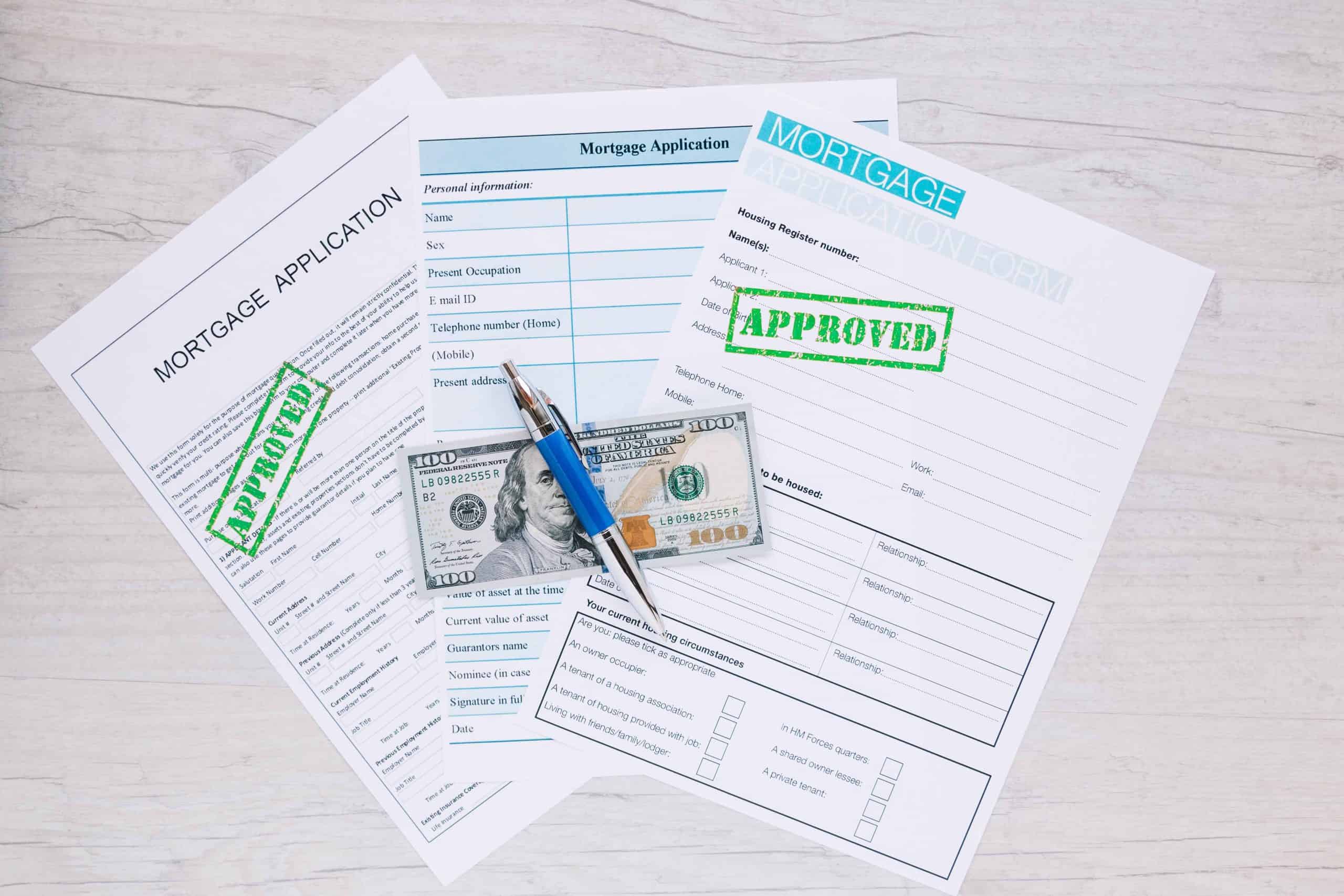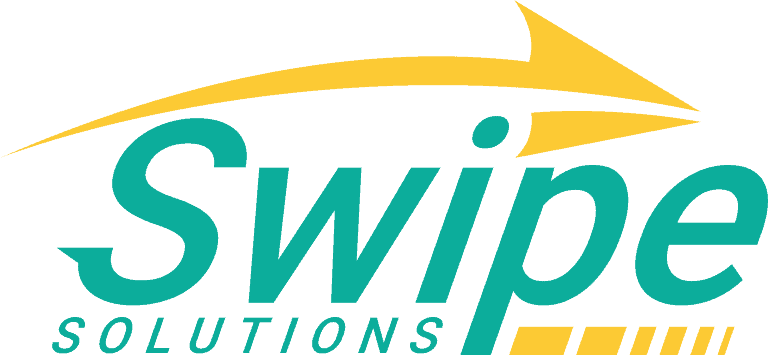How to Borrow Smart for Plastic Surgery
Cosmetic surgical procedures may help you to improve problem areas that are currently causing you grief and eroding your level of self-confidence. Some cosmetic surgical procedures, such as breast implant removals and breast reduction surgeries, may be necessary for health and well-being. Regardless of the type of cosmetic surgery that you are interested in, the primary factor that may be standing in your way of booking your procedure is the cost.
These procedures can easily cost several thousand dollars or more. More than that, a typical health insurance policy generally will not cover elective cosmetic surgeries. Even if your insurance plan provides coverage for a necessary procedure, you may be floored to learn that you still have to pay a small fortune out of your own pocket. Finding a way to cover the cost of surgery is a top priority.
You and I both know how expensive healthcare costs are. With this in mind, you may be wondering if you should take out a medical loan or use other sources of funds to pay for the procedure. A closer look at the options can be eye-opening and may inspire you to make a smarter financial decision.
The Need to Be Smart About Paying for Plastic Surgery
Approximately 62 percent of bankruptcies filed in the United States are attributed to huge medical expenses, according to the results of a Harvard University study. What could be the specific impacts of medical expenses on your finances?
There are a wide range of financing options available to pay for medical costs, including unsecured and secured options. Interest rates are usually higher and financing terms are shorter with unsecured loans. This sets the stage for expensive monthly payments that can weigh down your budget potentially for years to come. On the other hand, secured loans may have longer terms, lower rates and more manageable monthly payments. However, if you default on a secured loan, you run the risk of losing your collateral.
The Prevalence of Plastic Surgery in the United States
According to the American Society of Plastic Surgeons, approximately 17.1 million cosmetic procedures were completed on Americans in 2016. The total cost of these procedures in 2016 was $16.4 billion.
Successful cosmetic surgeries are pronounced and may even improve many aspects of a person’s life. For example, a breast reduction surgery may alleviate recurring back pain, promote improved self-confidence and enable a woman to exercise and maintain fitness more comfortably. Even elective procedures, such as tummy tucks and liposuction, may improve how you feel about yourself and how others view you in both personal and professional settings. With these and other essential benefits associated with different types of cosmetic surgical procedures, you can see why so many people believe that they are worthwhile. However, the question of how to pay for these procedures must first be answered.
How Much Does Cosmetic Surgery Cost?
Before you take out a personal loan for cosmetic surgery, you need to be aware of the typical costs for various common procedures. Your surgeon can provide you with a personalized breakdown of specific costs as they apply to you, but you can explore average costs to get an estimate as well.
According to the American Society of Plastic Surgeons, the national average in 2016 for a breast augmentation was $3,719 while breast implant removal was $2,506 and breast reduction was $5,631. A facelift had the highest average cost at $7,048. Additional average costs include $4,571 for a buttock lift, $3,022 for eyelid surgery, $5,798 for a tummy tuck and $3,200 for liposuction. While some people pay for the cost of their cosmetic procedure entirely out of their pocket, you and I know how financially challenging it can be to shell out thousands of dollars all at once. Plastic surgery financing is a convenient way to schedule the surgery today and to pay for the procedure slowly over time with regular monthly payments.
Should You Finance Your Cosmetic Procedure?
Before applying for a personal loan or using other sources of plastic surgery financing, analyzing the benefits associated with financing in general is a great starting point. While the exact financing options available to each patient are unique and specific benefits vary, there are a few general reasons why financing makes sense.
A cosmetic surgery loan enables you to take advantage of the procedure’s benefits now and to conveniently pay the debt off over several months or longer. When deciding if you should finance your procedure, you must determine the legitimate benefits associated with getting the surgery now versus saving your money and scheduling the procedure later. You also must review your monthly budget and determine a maximum monthly payment amount that you can afford to make. Unless the surgery is essential right now, your monthly surgery loan payment should not create an unnecessarily tight financial situation or impair your ability to save for the future. As you can see, each person must weigh several important factors and make a personal decision about the best course of action.
A Closer Look at Financing Options
For many people, the question of whether or not financing a procedure is a smart idea requires review of the loan options and the need to compare terms and payments. Compiling a list of financing sources is an important first step.
Several unsecured financing options are available to you, and these include personal loans, credit cards, medical credit cards, doctor payment plans and private loans from family and friends. Secured financing options that may be available to you are a cash-out refinance mortgage, a home equity loan or a home equity line of credit. Additional sources of funds include borrowing money from your personal savings account or your retirement account. Some doctors also offer private payment plans to their patients. Analyzing the pros and cons of each option in detail is essential in order to move forward confidently and reduce or eliminate unnecessary financial strain.
The Benefits of Personal Loans

The most common source for unsecured personal loans is banks, but you can also apply for a personal loan with a credit union, an online lender and other financial institutions. The specific financing terms offered by different lenders vary dramatically, so you should request multiple estimates from reputable sources before you decide if this is the right solution for you.
One of the many benefits of unsecured personal loans is that you do not have to pledge collateral and place your valuable assets at risk. Many people also appreciate the fact that unsecured personal loans have a fixed interest rate and a set term, but some loans have variable interest rates. This structure establishes regular monthly payments that may be easier to manage financially. You also will benefit from a firm debt payoff date. In addition, the application process for an unsecured loan is straightforward in most cases, and the funds from an approved loan request could be available within a few days or less of your application date.
The Drawbacks of Personal Loans
Before deciding that the benefits of an unsecured personal loan are too great to pass up on, be aware that this financing option has several drawbacks. In fact, you may entirely rule out this source of financing because of these negative aspects.
Banks generally require you to have a healthy financial profile in order to qualify. This may include an excellent credit rating and a reliable source income. You may find some personal loans available to applicants with lower credit scores, but the loan program may have a higher interest rate and a shorter term length. This combination of factors will result in a higher monthly loan payment that may be more difficult to manage. Many banks also review your debt-to-income ratio to ensure that you will not be heavily burdened by the new loan payment, and this qualification step may disqualify some applicants.
The Pros of Drawing Funds from a Personal Credit Card

If you are one of the many millions of people who have at least a credit card or two in your wallet, you may be thinking about simply pulling a card out as an immediate, no-hassle payment option. While credit cards have developed a bad reputation with some consumers, there are some advantages to this financial solution.
Credit card interest rates are generally higher than most of the other financing options available to you, but you may be able to take advantage of a low-interest or no-interest offer. If you can pay the balance off before this limited-time offer expires, you may avoid all interest charges associated with financing your cosmetic procedure. In addition, if you use a credit card account that is already open and established, the hassles of applying for a loan are eliminated. You may also obtain essential financing without concern about credit scores when using an existing account. If you need to apply for a new credit card with bad credit or with minimal credit history, you may find several credit card options available.
The Negative Aspects of Using Your Personal Credit Card
Credit cards are a form of unsecured financing that are characterized by high interest rates and a revolving term. These factors set the stage for numerous disadvantages.
Because credit cards are easy to qualify for and to make charges to, it is also easy to accumulate a significant amount credit card debt. With the revolving term, there is no fixed repayment date. It may take some people several decades to fully pay off their credit card balance because of the combination of the revolving term and high interest rate. Credit cards are also associated with expensive annual fees and late payment fees, which can further increase the overall cost of this form of financing. If you are able to take advantage of a limited-time offer with no interest or with a low interest rate, you may feel intense pressure to pay the balance off within the allocated time period to avoid deferred interest charges.
The Advantages of a Medical Credit Card
Medical credit cards are specifically designed to help people pay for healthcare expenses. They share benefits with standard credit cards and have a few unique benefits that you should be aware of.
Some medical credit cards have low introductory interest rates, which can essentially provide you with free financing if you are able to pay the balance off in full within the specified time period. Qualification requirements are similar to those for an unsecured bank loan, but the application process may be completed faster in some cases. Because the account can only be used to pay for medical expenses, the possibility of falling heavily into debt is reduced compared to this risk with a standard credit card. Unlike a typical credit card, medical credit cards usually have a fixed term with a firm repayment date. Furthermore, you may be able to adjust your monthly payment amount by choosing between a few term options.
The Disadvantages of a Medical Credit Card
You can see that a medical credit card blends the features of an unsecured personal loan and a standard credit card with the unique caveat that it can only be used to pay for medical expenses. While these features offer benefits, they also set the stage for substantial disadvantages.
While some medical credit card accounts have a low introductory interest rate, the permanent interest rate may easily exceed 22 percent. If you fail to pay the balance off in full by the introductory offer’s deadline, you may be required to pay deferred interest charges. Term lengths are usually available between six and 24 months. With the high interest rate and short term length, the monthly payments for medical credit cards can be much higher than with the other financing options that may be available to you. Furthermore, you typically must have a good credit score, steady and verifiable income and a low debt-to-income ratio to qualify.
The Reasons to Consider Applying for a Cash-Out Mortgage Loan

If you have a considerable amount of equity in your home, you may be able to tap into that equity with a cash-out refinance loan. This is a secured loan that uses your real estate as collateral, and it may have a term length up to 30 years.
When you use a cash-out refinance loan to pay for medical expenses, you are essentially rolling your expenses into your monthly housing cost. In some instances, homeowners are able to take advantage of low interest rates and may set up a new monthly mortgage payment that is equivalent to or even lower than their current mortgage payment while also obtaining necessary cash. Mortgage interest may be deductible, so you may offset your personal tax liability throughout the life of your mortgage. Many homeowners qualify for more cash than they need to pay for medical expenses. This additional cash may be used for other beneficial purposes, such as to consolidate credit card debt, to fund a child’s college education or to make improvements to their house.
The Downsides to a Cash-Out Mortgage Loan
As beneficial as a cash-out refinance loan seems, it has significant drawbacks that require close analysis. These drawbacks could potentially impact your financial well-being for decades.
When you refinance your mortgage, the loan’s payoff date is re-established based on the term that you select. A 30-year term is popular because it sets up the most affordable monthly payment, but it likewise means that you will be paying off the debt for several decades. Furthermore, if you default on the mortgage, you may lose the house through foreclosure. You may recollect how stressful and time-consuming it was to apply for your original mortgage, and you can expect a similar experience when you apply for a refinance loan. You also must have the financial health to qualify for a lender’s mortgage requirements. In addition, loan fees for a mortgage can be cost-prohibitive.
The Benefits of a Home Equity Loan or Line of Credit
A home equity loan or line of credit is a second lien against your home, and it does not replace the current mortgage on your home. You may apply for a home equity loan with a fixed rate and term, or you can take out a line of credit that allows you to take draws against your home’s equity as desired for a limited period of time.
As is the case with a first lien mortgage, the interest on a home equity loan or line of credit may be deductible and could offset your personal tax liability. These are secured financing options, so you can generally expect a more competitive interest rate compared to unsecured options. Unlike with a medical credit card, there are no limitations regarding the use of funds. Depending on the equity available in your home, you may qualify for a larger loan amount or line of credit than may be available to you through other options. The term length on a home equity loan or line of credit typically is between 10 to 15 years, which allows you to set up affordable monthly payments.
The Negative Aspects of Home Equity Loans and Lines of Credit
Because there are many similarities to cash-out refinances, home equity loans and home equity lines of credit, their drawbacks are similar as well. However, there are a few unique drawbacks that you should be aware of.
A cash-out refinance mortgage payment replaces the previous mortgage payment, but a home equity loan or line of credit adds a second payment to your budget. By taking out a second secured loan against your home, you are increasing your exposure to foreclosure risk. In addition, the application process can be long and tedious, and lender requirements include a low debt-to-income ratio, stable income, ample equity in the home to support the loan request and good credit scores. Financing fees for these options can be expensive. Keep in mind that the combined loan-to-value for the first lien and the new home equity loan or line of credit typically cannot exceed 75 to 80 percent of the home’s current value. Therefore, if you do not have a considerable amount of equity established in your home, this option is not available to you.
The Positive Aspects of Doctor Payment Plans
Some doctors and medical facilities offer their own payment plans. Because these are private financing programs, their features and benefits vary dramatically.
As you compare procedure quotes from a few physicians, inquire about the availability of their in-house payment plans as well as the loan terms and requirements. Generally, these will have a reasonable interest rate and a fixed term, which may make it easier for you to repay the debt. With some doctor payment plans, you can adjust the term length to establish a comfortable monthly payment. Because this is an unsecured loan, you are not placing any assets at risk. This type of loan is usually not reported to credit bureaus, so it may not negatively affect your debt-to-income ratio or affect your ability to qualify for other necessary financing.
The Drawbacks of Doctor Payment Plans
As is the case with the benefits of doctor payment plans, the drawbacks hinge on the specific terms and requirements in place. When comparing payment plans offered by different providers, be aware of these potential downsides.
These plans typically have a short term, which may establish high monthly payments. Some plans require you to pay at least some of the cost out of your own pocket. Furthermore, while there are benefits associated with not having the loan reported to the credit bureaus, this may prevent you from building your credit score through timely monthly payments. The applicant requirements for doctor payment plans also vary. In some cases, you may need excellent credit scores and a low debt-to-income ratio to qualify.
The Advantages of a Private Loan from Family or Friends
If you have a great relationship with a wealthy friend or family member, asking that individual for a private loan is another possibility. It can be humbling to ask for money, but the advantages of a private loan are significant.
While many loan programs have rigid terms, you may appreciate considerable flexibility when establishing the interest rate, term and monthly payments for a private loan. Furthermore, your friend or family member typically will not base their lending decision on your credit rating or have a strict debt-to-income ratio requirement. In fact, their financial analysis may solely be based on their perception of your financial well-being and overall responsibility. In the event that you run into a rough financial patch in the months ahead, your friend or family member may allow you to delay making payments until you are back on your feet. You may also be able to take out two or three smaller loans from different people rather than rely on one friend or family member to provide the full amount of cash needed for your procedure.
The Reasons to Avoid Borrowing Money from Family and Friends
The advantages of asking a friend or family member for a private loan can seem overwhelming, but there are other important factors to consider. By reviewing these factors, you may decide that this is not most advantageous way for you to obtain necessary funds.
The perception that you have of another person’s wealth may not be rooted in fact, and even those who appear to be financially successful may not have the means to provide you with thousands of dollars on demand. The imposition of your request could be significant, and it could deteriorate your relationship with this individual. He or she may resent being put on the spot about their personal finances. Furthermore, if you default on your loan, you risk potentially ruining the relationship entirely. Because cosmetic surgery is usually elective rather than required, your loan request could seem frivolous and even annoying to the other party.
The Pros of Using Personal Savings When Paying For Plastic Surgery

Applying for a loan or line of credit to pay for the procedure may be essential for some people, but others have the financial means to pay cash for some or all of their procedure. If you opt to tap into your savings account rather than borrow funds, you could take advantage of substantial benefits.
By drawing all of the funds from your savings account, you can schedule the procedure immediately and without concern about going into debt. You will not have to endure the financial burden of an additional monthly debt payment. You also will not be exposed to application fees, lender fees, interest charges and other related expenses. Your credit rating, income level and debt-to-income ratio will not be scrutinized. Even if you do not have cash on hand immediately, you could always save money for the next few months until your nest egg is large enough to pay for the procedure. Some healthcare providers offer a cash discount, so you may be able to save money on the procedure itself if you pay cash.
The Downsides of Using Personal Savings
Paying for your procedure entirely with cash has considerable benefits, but this option is only available to those who have a large savings account balance or who can save that amount of money in a reasonable period of time. Even if paying cash is possible, there are a few reasons why it may not be right for you.
Depending on the current balance in your savings account, paying cash for the procedure could empty your rainy day fund. Without a sizable savings account balance, you may not be able to weather unexpected situations in the months ahead. If you are unable to pay cash for unexpected expenses, you likely will fall into debt unnecessarily. In some cases, you may place your future financial well-being at risk by tapping into your established assets. For example, if you draw cash out of your taxable stock account or liquidate CDs prematurely, you may miss out on growth and the ability to improve your future financial well-being.
The Reasons to Use Retirement Funds
If you have been contributing to a retirement account, you could pull cash out of the account through a distribution or with a loan. Both of these could enable you to have available cash in your checking account within a week or less in some cases, and this is only one of several benefits.
Borrowing against your retirement account does not result in accrued debt, which is the case for other types of loans. Because you are borrowing your own money, you are not subject to a credit review or other common lender application requirements. With a 401(k) loan, your interest rate may be negligible. In addition, you may be able to repay the funds on your own terms without a rigid monthly payment structure as long as the funds are paid back by the due date. If you do not want to hassle with a loan, you could simply pull cash out of your retirement account without the intention of paying it back.
The Disadvantages of Withdrawing Money from a Retirement Account
You may have a sizable retirement account balance to draw from, so this may seem like a convenient and simple way to access funds for cosmetic surgery. Nonetheless, it can expose you to substantial financial loss and unnecessary stress.
If you take a retirement account distribution for this purpose, you may be responsible for paying income taxes as well as early withdrawal penalties when you file your next tax return. If you borrow the money from a retirement account, you may be required to set up repayments via an automatic payroll deduction with your employer. If you are fired or quit, the outstanding balance may need to be paid in full within 60 days. Furthermore, there are caps on the maximum loan amount available. One of the most significant disadvantages is the impact that this can have on your retirement plans. Any funds that you pull out are no longer growing, and the compounded effects can be tremendous over time.
Factors Impacting Your Ability to Borrow Responsibly
With pros and cons associated with all of these financing options, you can see that there is no single solution that is a clear-cut winner for everyone. Because so many individual factors can influence your decision, consider a few important points first.
Ask yourself how important it is for you to benefit from cosmetic surgery immediately rather than to delay the surgery for a few months. Consider if you are willing to sacrifice in other areas to more comfortably afford cosmetic surgery loan payments, such as by eliminating cable or streaming TV services for a few months. Explore more affordable treatments available so that you are aware of all options. If your credit scores are lower, it may be financially worthwhile to spend a few months improving them before you apply for a medical loan. You may also consider combining several of these financing options together to maximize their benefits and to reduce the impact of their downsides.
When to Walk Away
The unfortunate reality is that elective cosmetic surgery is not affordable for everyone. As much as you may want to see the impressive results of a tummy tuck, liposuction or other procedures, you should know when to walk away.
An elective surgery should not place you in unnecessary financial jeopardy. If your budget is too tight to absorb another debt payment or if you are already swimming in debt, taking on a new loan is not usually advisable. This may be particularly true if you have minimal cash in savings and little or no money available in a retirement account. An honest review of how medical financing can affect your life today as well as in the next several years and beyond is important. There are some instances when the benefits are simply not worth the risks and downsides. On the other hand, you may feel comfortable with financing plastic surgery costs, and you may be ready to get the ball rolling.
Important Steps to Follow Before Applying for a Cosmetic Surgery Loan

You and I know how easy it is to act hastily for instant gratification. While you understandably want to enjoy the benefits of your cosmetic surgery as soon as possible, taking time to assess all options available and to understand their impact through these steps can help you to make a smarter decision.
- Gather quotes for the procedure from at least three reputable sources.
- Review your credit report, and decide if you need to take time to improve your credit rating before applying for financing.
- Review your personal monthly budget. Determine the maximum monthly payment amount that you can afford.
- Assess your financial situation to determine if you can afford to pay out-of-pocket for a portion of the medical expenses.
- Pull together financing quotes from several sources.
- Read the fine print so that you fully understand all costs and requirements related to the loan.
- Compare loan fees as well as monthly payments. Pay close attention to the total cost of financing, which includes all interest charges over the life of the loan, upfront expenses and recurring financing fees.
Are You Ready to Apply for a Medical Loan?
Have you decided that you can afford to pay for your procedure with plastic surgery financing? Are you eager to book your procedure as soon as possible. You can see that the financing option that you select, how well you prepare yourself financially for the new monthly payment and even the optional terms that you select have huge ramifications on many facets of your life. Take time to analyze all of the specific options available to you so that you can maximize the benefits of your cosmetic surgery without enduring financial hardship. Have you had previous experiences with medical financing that you can tell our readers about in the space below?

